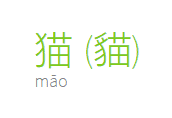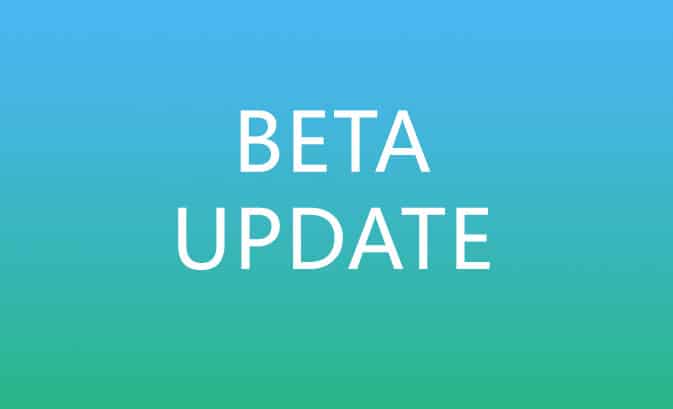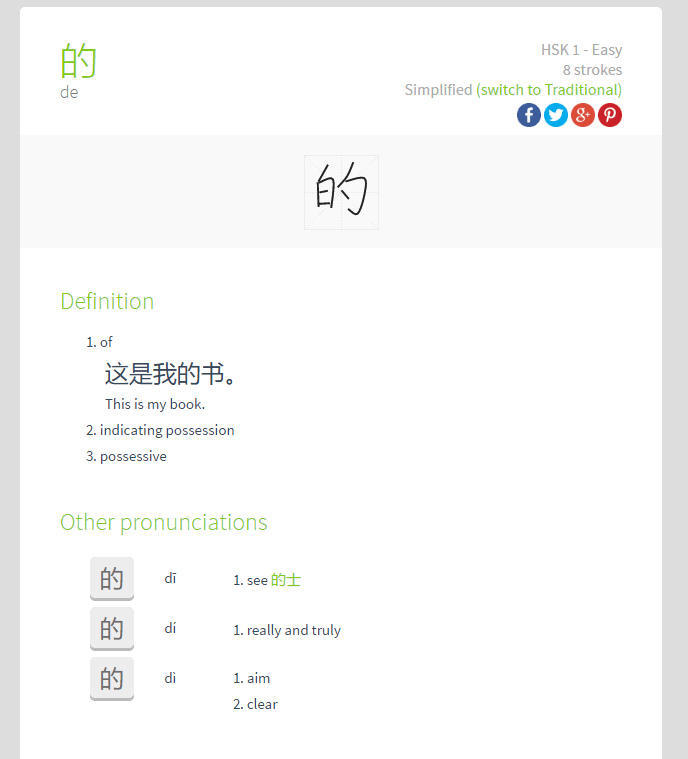Hi guys, we’re back with a new update for Ninchanese! And guess what? It’s monumental. In fact, it’s an update of biblical proportions… well, not biblical but of dictionary proportions at least, with lots more Chinese words in Ninchanese. Read on to know why!
In this update, we focused a lot on improving and reworking our way of dealing with Chinese characters. A lot of the work we did was behind the scenes, so you won’t be seeing a big part of the changes we’ve made. Don’t be jealous, you’ll soon be seeing the consequences and results of those background improvements! And not to worry, there’s still plenty to see in this update. Here are the changes and improvements what you can see in this update.
Waaaaay more Chinese words
Ninchanese used to be your fave Chinese learning tool, did you know it can now also be…. your go-to online dictionary? We’ve incorporated the whole CC-CEDICT database in Ninchanese for your viewing pleasure! That’s over 100, 000 Chinese characters and words you can now look up, explore and discover directly in the app.
As you can guess from this funny tweet, all sorts of words and names are now browsable in Ninchanese:
Tatatatat BATMAN ^^ 蝙蝠侠 – Biān fú xiá on @Ninchanese https://t.co/XvUzyMhRKK
— Jean-Remi (@JeanRemi_Laisne) 31 May 2016
More Chinese words to explore in Chinese meant more information to show you, so we seized this opportunity to improve the word pages for each character and word.
A detailed word page for each Chinese character and word (which you can share)
We reworked the way word pages worked to bring you more information on each word. For a given word or Chinese character, say 猫, before the update, you could:
- Hear its pronunciation
- See its pinyin
- Read the character’s meaning(s)
- See its HSK level, when applicable
- See an animation of the stroke order
- See an example sentence for each of its meaning, when available
- Get information on the character’s composition: what components or elements is it made of?
Now, in addition to all that, when you look up a character, you can now also see:
- Simplified / Traditional form
Mandarin Chinese has two written forms: Simplified Chinese and Traditional Chinese.

Now, on each word page, you can see and switch between the two forms. It’s a first step towards the implementation of Traditional Chinese in Ninchanese!
- Compounds
Compounds are single characters that contain the character you looked up as one of their components. Here’s an example with the Chinese word 是 shì. The character 提 tí , for instance, is a compound of 是 (where 扌 is the meaning component, providing a clue to the word’s meaning and 是 is the phonetic component – it’s a stretch, but tí sounds a little close to shì)
- Words that contain that character
Modern Chinese words are usually composed of more than one character so it’s always extremely interesting to see all the words that contain the character or characters you’re looking up.
For each single or multiple characters, you search for, you can now browse a list of the words that contain this character. This includes words that begin with the character you’re looking up and words that end with the character you’re looking up. Click on any of those words to see their definition in a separate page. Useful, no?
- Idioms
The Chinese language is well known for its idiomatic expressions, idioms, the most famous of all being its 4 character idioms, the 成语, chengyu. For each character or word you look up, we now show you the idioms that contain that character or word. Pretty cool way to discover new idioms, don’t you think?
Easily look up words
Say you want to look up a word in Chinese on Ninchanese?
Here’s a tip to easily look up new words: type app.ninchanese.com (also works on ninchanese.com) like you normally would, to access your Chinese learning app. You’ll see a new indication appear: 
Instead of pressing enter, hit “tab”. This allows you to instantly look up a word on Ninchanese in your url bar and call up its word page directly. Nifty, don’t you think? Here’s a gif to show you exactly how it works:

Share the words you love
You can now also share each page on your favorite social network. You never know. Chinese is full of funny expressions and words. Maybe you’ll run into one you want to share with your pals? Or maybe you want to save it to one of your Pinterest boards for future reference? You can now do that and it’ll look like this:
What else is new?
In addition to adding a whole dictionary to Ninchanese and greatly improving our word pages, here are a few more notable changes you may want to know about.
Improving how we deal with polyphonic words
Did you know that some words in Chinese have multiple pronunciations and meanings, but look exactly the same? These characters are called polyphonic characters (literally, words with multiple pronunciations).
We used to show you the different pronunciations and meanings of a polyphonic character in the same word page.
Now there’s a page for each pronunciation and its assorted meanings and a link to its other pronunciations so you can learn each individually. They may look the same, but they are different characters after all. Like so:
Two things to know about learning polyphonic characters:
- There’s a chance you’ll need to be learning the new meanings and pronunciations as brand new words.
- When you’re reviewing the words you’ve learned, we’ll give you a hint as to which pinyin or meaning of the polyphonic character we’re asking you about; because otherwise, you have no way of knowing which word we’re asking you about!
More on typos
We’ve also made a few small improvements in the vocabulary stages:
– The typo detector now accepts tones entered as numbers: It used to reject number marks for tones, but it no longer does. Whoot!
– Hyphens? What hyphens? You can now type words with hyphens, with or without; we figure it was too mean to get an answer counted as wrong just because you didn’t use a hyphen properly. It’s a small step towards more flexibility in the answers we accept, let’s say.
These small but useful improvements conclude our round-up of the big, visible, changes brought about by this beta update.
Rest assured, there’s a lot more coming! Like I said in the beginning, this update is monumental. Monumental mainly in that it paves the way for a lot of things to come. You’ll see; there’ll be quite a few new big things added to Ninchanese in the coming weeks/ months; things like World 5 (for advanced Chinese learners, and HSK 5 takers), and traditional characters…
Sarah, a meowsome member of:
The Nincha Team
Stay in touch with us on Facebook, Twitter, Instagram, and Pinterest.






2 comments
Join the conversationPingback: Top 10 Activities to Keep Learning Chinese This Summer - Ninchanese
Pingback: Design update: Paving the way for the Android Mobile App! - Ninchanese
Comments are closed.